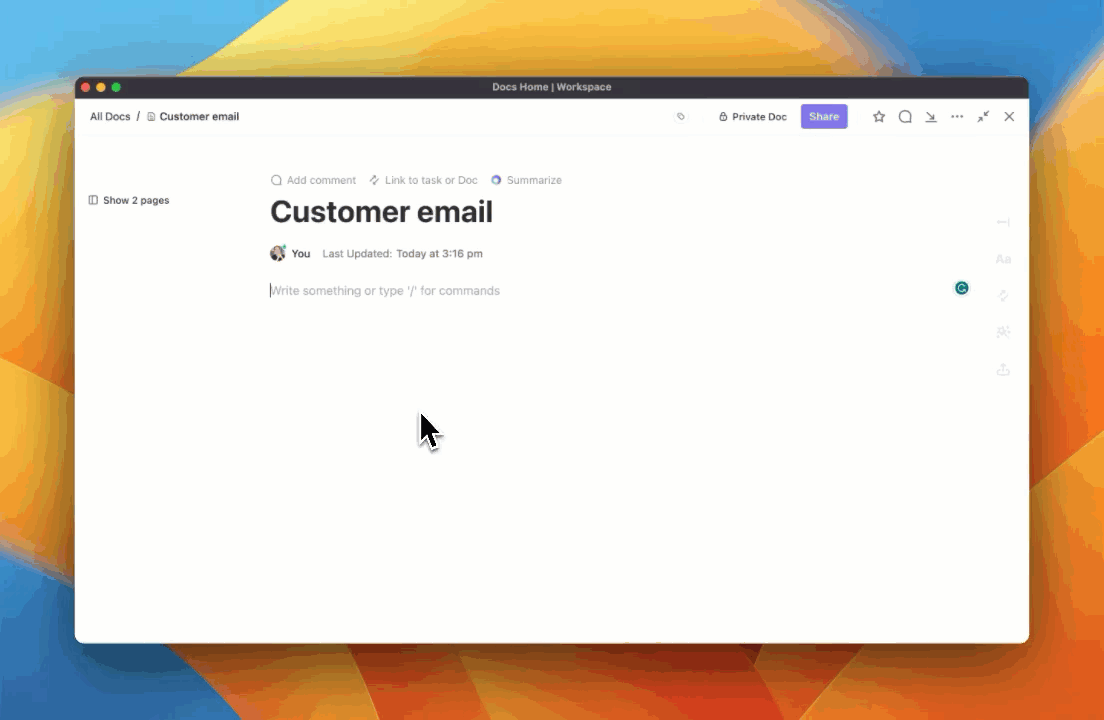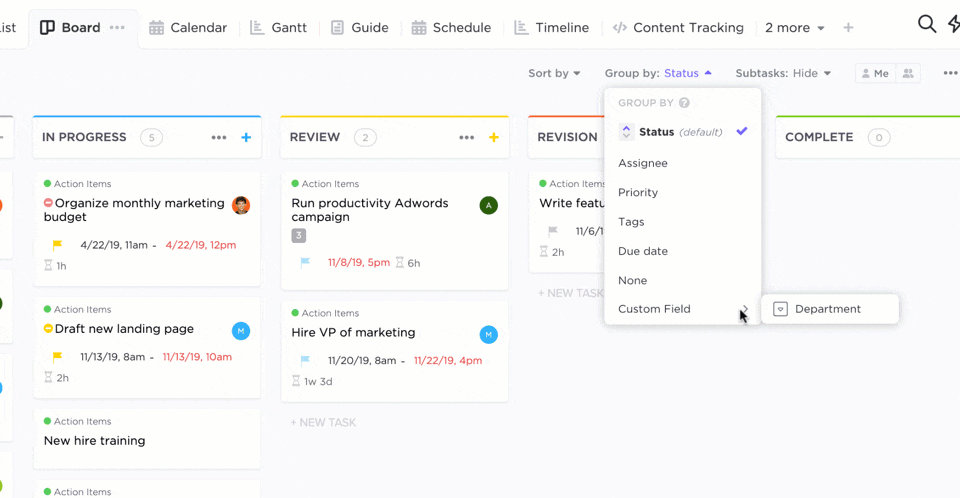10 Best Release Notes Software in 2025

Sorry, there were no results found for “”
Sorry, there were no results found for “”
Sorry, there were no results found for “”
Aligning the key elements of customer needs and product vision is crucial. Product releases must strike a fine balance between both. However, the most thoughtfully planned release could go unnoticed without clear and detailed release notes. Writing great product release notes is an art, but release notes software can simplify the process.
This tool lets you record and share details about a product release by leveraging features like centralized documentation and collaboration. It streamlines communication, saves time, and ensures everyone, including key stakeholders, is on the same page.
Weighing the pros and cons of various tools to choose the most feature-rich one that best suits your product management team is not easy, especially with so many options in the market.
Here is a list of the best release notes software to help you choose the one that works for you.
Release notes software is an invaluable tool for a product management team to help them document the latest software updates, new features, bug fixes, feature enhancements, and more. It ensures everyone on the team is updated on new software product changes.
When choosing a release notes software, consider the following features before making an investment:
Also Read: Essential templates for product managers
Here’s our carefully made list of the most impactful product release notes software that every product team must check out:
ClickUp is a powerful tool for managing projects, improving work efficiency, and helping teams stay organized. This release notes software solution consolidates various activities for a development team, from handling tasks to enabling streamlined communication and collaboration.
ClickUp’s project management solution for software teams provides seamless management from planning, prioritizing, and designing the product to releasing it and reporting on projects.
One of the standout features of this product is its capability to offer extensive integrations (over 1000 and counting) that help streamline collaboration and enhance productivity across teams and users.
Development teams looking to streamline their release note process can use the dedicated ClickUp Release Notes Template to communicate effectively with customers, partners, and stakeholders about product updates. This template provides a clear and concise way to summarize changes, improvements, and more.
This fully customizable Docs template gives you the same structure that ClickUp’s product teams use to create and share release notes internally and externally.
Create a project for each release note and assign time-bound tasks to specific owners. Brainstorm content ideas for the release note, and craft it yourself or take help from the integrated AI Writer for Work. It can automatically create the perfect release notes based on the talking points and tone you want to incorporate. You can then use the rich text editor in Docs to format the note and add helpful metadata as annotations.
With version tracking, built-in spelling and grammar checks, and AI on standby should you need help improving sentences, release notes are no longer an effort to produce.

Apart from automating technical documentation by creating release notes with ClickUp, teams can also use other core features to increase workforce productivity.





GitHub Releases simplifies the launch and distribution of new software products for developers. It enables coders to write product release notes and share them effortlessly. This tool also allows version tracking, change management, and attachment of release notes and assets.
Using GitHub Releases, your team can write release notes manually or generate them using a default template via automation. Although typically stored as text files sans images, this may seem daunting for non-developer stakeholders.
Nevertheless, it’s a great tool for facilitating collaboration among team members and receiving release notes updates. It maintains a detailed project history, making it a good option for developers for release management.
Releases are included in your main GitHub plan. Pricing for GitHub is as follows:

Jira is a highly customizable tool that’s a favorite among developers. It’s notable in the industry for including features to create release notes, organize and assign tasks, and support teams staying in sync. In Jira, a release is also known as a version.
Additionally, Jira offers other robust capabilities for developers, like tracking, reporting, and analytics. These tools help you gain insights into the software product development process, monitor progress, and make changes, if needed, to the new product
Jira has a user-friendly interface and includes visual aids (screenshots, code snippets, and explanations) in its release notes to help you not get lost along the way. And the best part? It keeps you updated with email notifications of release right within the app itself.
Also read: 10 Best AI Tools for Note-Taking in 2024

Confluence can be used for creating various types of content, including engaging release notes.
You can also add multimedia and other dynamic content to make your work attention-grabbing and professional. Share Office docs, images, PDFs, and more with advanced collaboration tools.
For streamlined file management, Confluence lets you customize templates, access instant previews, enable automated versioning, execute full-text search, and even pin comments.
The release notes in Confluence follow a typical bullet-oriented approach, highlighting key points and linking to relevant information whenever possible.
But the interesting part is that the release notes include a ‘more details’ section. When you click it, you get insights into the thought process, the minute details that tell what happened in the background.

GitLab facilitates the creation and monitoring of releases, along with release notes, either through its user interface or by defining release tasks within a CI pipeline. This system effortlessly generates markdown-formatted release notes, summarizing all changes between the previous and current releases.
It is a comprehensive DevOps platform that allows coders to seamlessly navigate through all project tasks—from initial product planning and source code management to ongoing tracking and security measures.
GitLab equips your team to develop a quality software product by enabling collaboration among all members throughout all development phases, which is a significant convenience.

Bitbucket is a platform designed for software teams to manage code effectively in a structured manner. Its core functionalities were developed to facilitate team collaboration and integrations, increase security, ensure scalability, and support multi-language.
A crucial functionality of the Bitbucket tool is Git Changelog. It automates the generation of release notes from the Bitbucket server. It is AI-powered, which makes analyzing software updates a piece of cake.
It extracts critical product development-related data, such as bug fixes, performance enhancements, and functional adjustments, and compiles them into insightful release notes for all users.
Also read: How to Write a Good Bug Report

Trello, which is primarily known for seamless project management, uses a Kanban board modality that allows users to create project boards, task lists, and cards to monitor progress (start to end) effectively.
It has a user-friendly interface, supports collaboration among team members brilliantly, and keeps everything organized, whether managing tasks, handling projects, or workflows. Plus, it offers many other useful features like task assignments, due dates, labels, and comments.
When it comes to writing a release note, Trello has a Notes and Docs power-up feature, which is AI-powered. Users can leverage it to create detailed release notes by adding files, images, tables, and more.
What’s best about Trello’s release notes is you can easily create them all inside your Trello cards on boards. This means you don’t have to deal with the hassle of switching tools.

Asana is another great tool for developers to consider when writing release notes. The tool helps teams connect beyond geographical boundaries and carry out their work, managing everything from day-to-day tasks to bigger projects, all in one place.
Asana does not have a native release generator, but you can use AI prompts to create AI-generated task summaries and descriptions and plug them into a combined release notes document.
With the Asana for Slack integration, the task summaries can help teams stay updated right in Slack. This lets them have a brief overview of task progress (feature updates, bug fixes, etc.) without leaving their Slack workspace.

Google Docs, part of Google Workspace, is yet another versatile platform to add to our list of tools for creating release notes. It enables seamless collaboration for your team in real time.
With features like text formatting, embedded links, and images, developers can effectively communicate new features, product enhancements, or bug fixes in their product release notes.
The Google Docs release notes template simplifies the writing process by organizing information under categories, ensuring clarity. Developers can customize the template to meet specific project needs by adjusting titles, categories, and descriptions.
Another crucial capability of Google Docs is controlling version history. It’s a smart feature that enables users to track previous and current changes and even switch to older versions as often as necessary.

Microsoft Word is a key part of the Microsoft Office suite and is widely recognized as a top-notch word-processing software. It is also the last addition to our list of release notes software.
The primary purpose of this software is to help users create, edit, and format text documents accurately. So, when it comes to writing detailed product release notes, MS Word is known to do a decent job. The software’s formatting options can structure release notes effectively by incorporating elements like headings, bullet points, and tables.
Although MS Word lacks built-in release notes templates, users can download templates online and customize them manually to suit specific needs. This can be viewed as a downside of using MS Word to create release notes, as it makes users do all the heavy lifting.
However, it offers other notable features to compensate, such as tracking changes, commenting, and version history. Additionally, MS Word’s integration with the other tools of the Microsoft Office suite allows seamless collaboration and sharing of documents.
Looking for inspiration? Here are some excellent release notes examples for you!
We covered the ten best tools for creating engaging release notes. To help you with your research, we highlighted some of their core features, limitations, and relevance based on trusted ratings from review platforms.
However, evaluating each tool for its merit and determining whether it meets your team’s needs could be exhausting and time-consuming.
Wish to skip that? Try ClickUp!
ClickUp is an all-in-one product development and management platform. It helps in software development, managing projects, writing release notes, marketing, and more.
With ClickUp, there’s no need to worry about paying for unnecessary tools just to generate release notes.
Sign up on ClickUp for free to streamline tasks and increase productivity!
© 2025 ClickUp